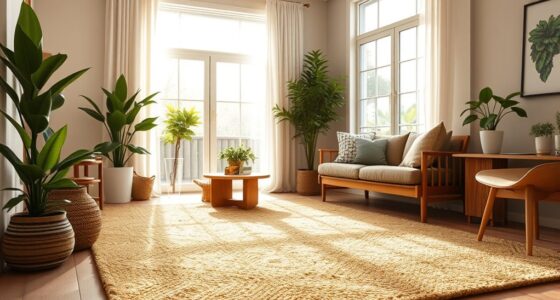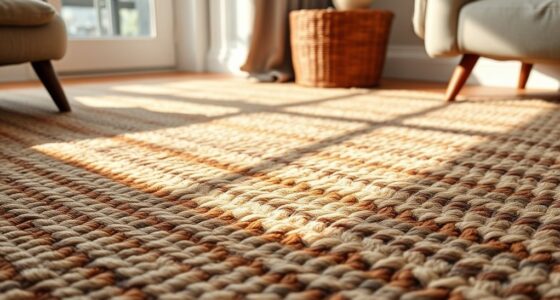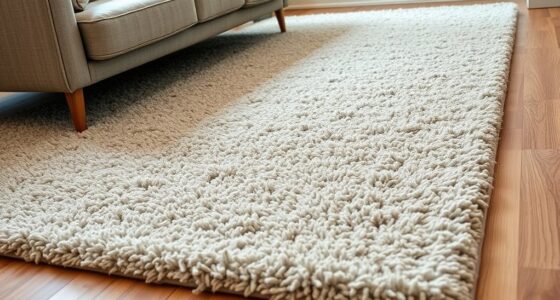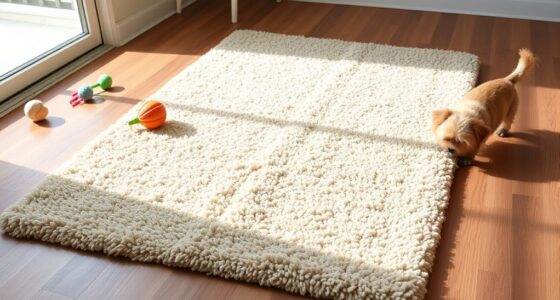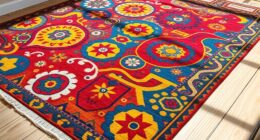Monitoring humidity under your rugs is key to preventing mold, wood damage, and costly repairs. Using smart sensors like capacitive or resistive types allows you to get real-time data and detect excess moisture early. Proper installation ensures accurate readings, and continuous monitoring helps you maintain a healthy indoor environment. By staying proactive with humidity management, you protect your home’s structure and air quality—keep exploring to discover more ways to keep your space safe.
Key Takeaways
- Use capacitive or resistive smart sensors placed directly on the subfloor to detect humidity levels beneath rugs.
- Secure sensors with adhesive strips to prevent movement and ensure accurate readings over time.
- Position sensors away from sunlight and vents for reliable, unobstructed humidity monitoring.
- Integrate sensors with smart home systems for real-time alerts and automated moisture control.
- Regularly monitor sensor data to prevent mold growth, wood damage, and maintain indoor air quality.
The Importance of Monitoring Humidity Beneath Rugs
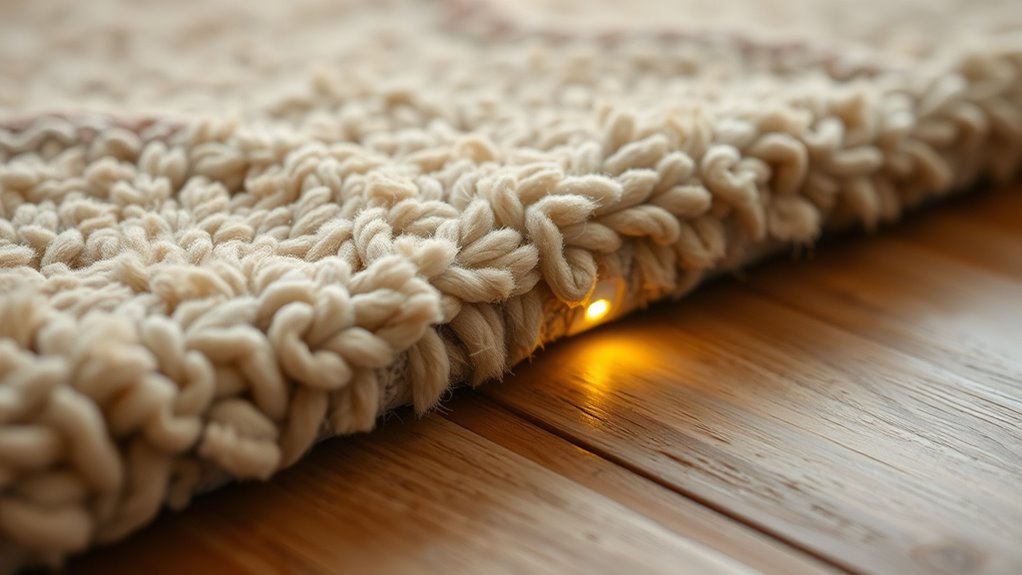
Monitoring humidity beneath rugs is essential because excess moisture can lead to mold growth and wood damage that you might not immediately see. When humidity levels rise, it creates a perfect environment for mold spores to thrive, which can cause health issues and unpleasant odors. Additionally, persistent moisture can weaken wooden floors, leading to warping or rotting over time. Rugs often trap humidity beneath them, making it easy for problems to develop unnoticed. By keeping an eye on these hidden moisture levels, you can take early action to prevent costly repairs and protect your home’s indoor air quality. Using smart sensors allows you to detect high humidity promptly, giving you peace of mind and helping maintain a healthier, safer living space. Proper general ledger coding can further assist in tracking maintenance costs related to moisture damage and repairs.
Types of Smart Sensors for Humidity Detection
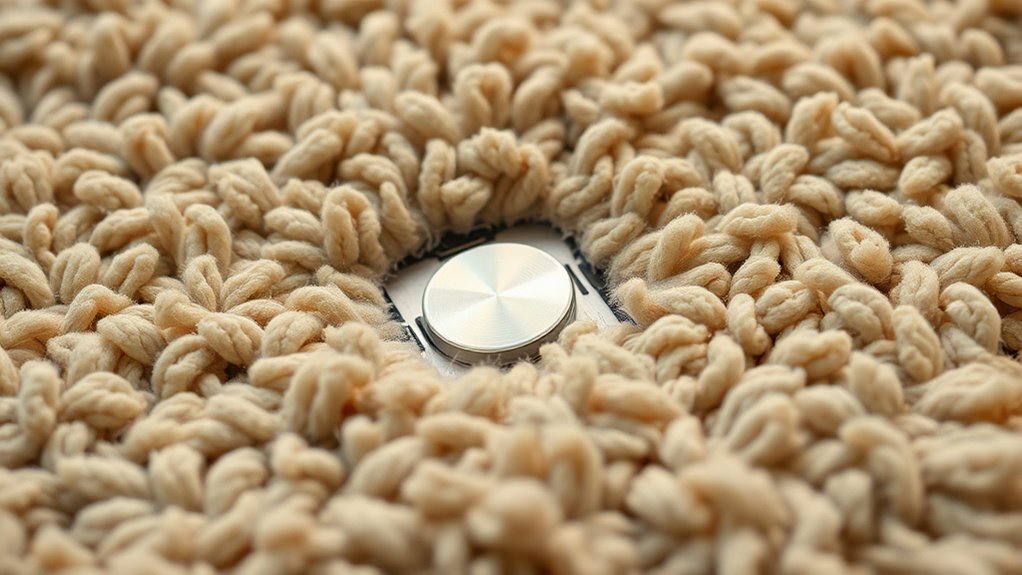
Smart sensors for humidity detection come in various types, each designed to suit different needs and environments. Capacitive humidity sensors are popular because they offer high accuracy and stability. They work by measuring changes in capacitance caused by moisture absorption. Resistive sensors are another option; they detect humidity through changes in electrical resistance as moisture levels fluctuate. Thermo-hygrometers combine temperature and humidity measurements, providing all-encompassing data, especially useful in sensitive areas. Some sensors use polymer or ceramic materials, offering durability in different conditions. Digital sensors connect easily with smart home systems, providing real-time updates via apps. Choosing the right sensor depends on your environment, budget, and accuracy needs. By understanding these options, you can select the ideal humidity sensor for your rug monitoring setup. Understanding market trends can help you better evaluate the reliability and suitability of different sensor types.
How to Install and Set Up Humidity Sensors Under Rugs
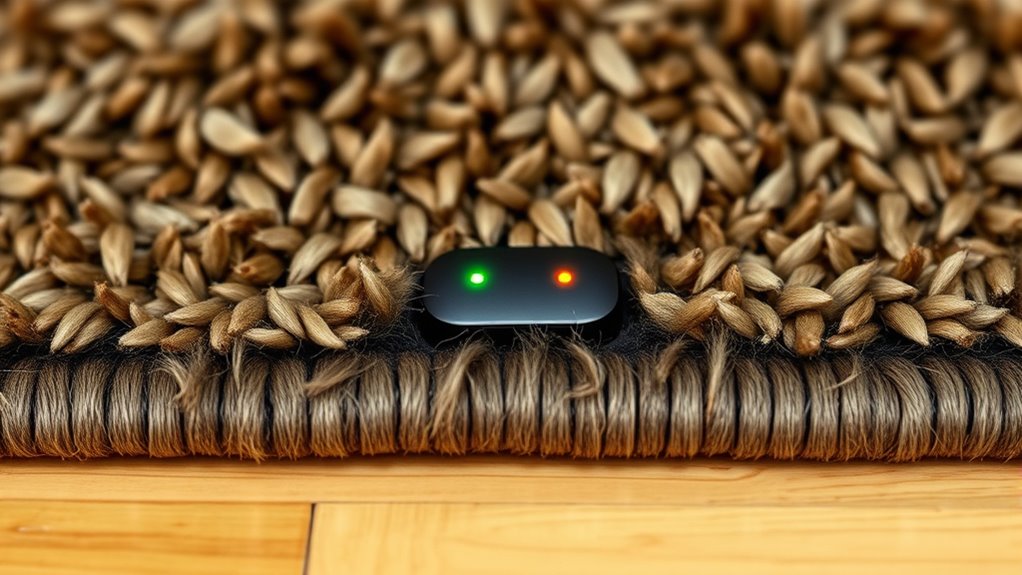
To guarantee accurate humidity readings beneath your rug, proper installation of the sensor is essential. First, choose a flat, dry area where airflow is unobstructed. Place the sensor directly on the subfloor, avoiding thick padding or foam layers that can skew readings. Use double-sided tape or adhesive strips to secure it firmly. Ensure the sensor’s openings face upward for ideal detection. Adjust the sensor’s position if you notice inconsistent data. Keep the sensor away from direct sunlight or vents. Proper placement ensures the sensor accurately monitors indoor humidity levels, which is crucial for maintaining a healthy environment.
Benefits of Real-Time Humidity Monitoring for Homeowners
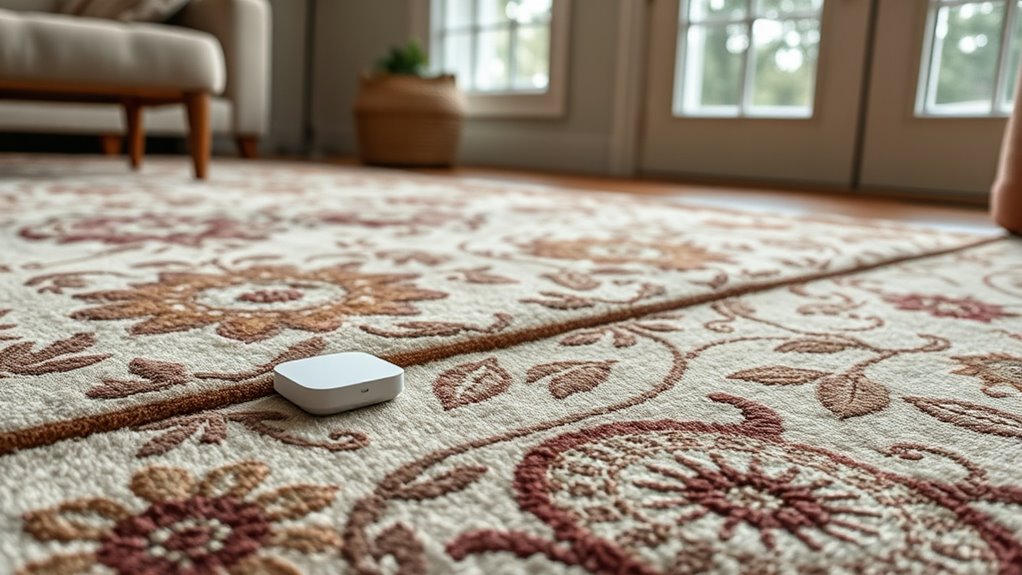
Real-time humidity monitoring empowers homeowners to detect moisture issues immediately, preventing costly damage and mold growth. When sensors alert you to rising humidity levels under your rugs or in hidden areas, you can act quickly to address the problem before it worsens. This proactive approach saves you money on repairs and reduces health risks associated with mold and mildew. With instant updates, you gain peace of mind knowing your home’s environment remains safe and dry. You no longer have to rely on sporadic inspections or guesswork. Instead, you get continuous, accurate data that helps you make informed decisions about ventilation, dehumidification, or cleaning. Additionally, integrating humidity sensors with smart home systems can automate responses like activating dehumidifiers or fans, further protecting your home. Overall, real-time humidity monitoring offers a simple yet powerful tool to protect your home’s structure, furnishings, and your family’s health.
Tips for Maintaining an Optimal Indoor Environment
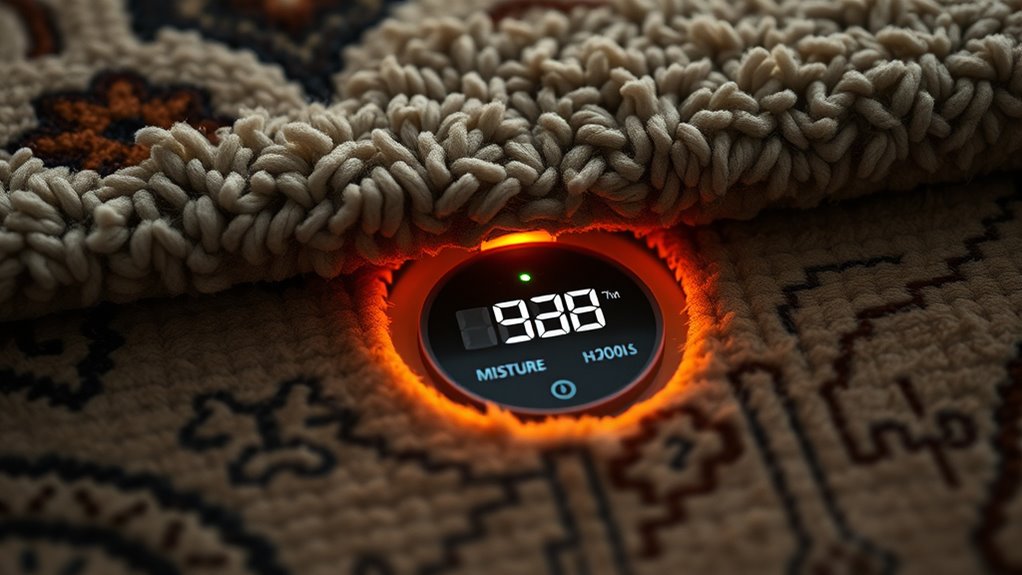
Maintaining an ideal indoor environment requires consistent effort and attention to key factors like humidity, temperature, and air quality. Use smart sensors to monitor these elements regularly, making adjustments as needed. Keep humidity levels between 40-60% to prevent mold and dust mites. Ventilate rooms daily to improve air quality. Regularly clean and maintain heating and cooling systems for efficiency. Consider using dehumidifiers or humidifiers based on sensor readings. Proper filtration systems, such as HEPA filters, can further enhance indoor air quality and protect against allergens.
Frequently Asked Questions
How Long Do Smart Humidity Sensors Typically Last?
You’re wondering how long smart humidity sensors usually last. Typically, these sensors have a lifespan of 3 to 5 years, depending on the quality and usage. Regular maintenance, like replacing batteries and keeping them clean, can prolong their life. Some models might offer longer durability if they’re built with high-quality materials. Always check the manufacturer’s recommendations for specific details to guarantee your sensor works effectively over time.
Can Sensors Detect Mold Growth Beneath Rugs?
Imagine you’re walking barefoot on a soft rug, unaware of the unseen moisture lurking beneath. Yes, sensors can detect mold growth under rugs by sensing changes in humidity and temperature. When mold begins to grow, it alters the environment, and smart sensors pick up these signals. Regular monitoring allows you to catch mold early, preventing damage and health issues, giving you peace of mind in your cozy space.
Are There Sensors Suitable for Different Rug Materials?
When considering sensors for different rug materials, you should look for versatile, non-invasive options designed to detect humidity and moisture levels accurately. Many sensors are adaptable to various textures and materials, guaranteeing they won’t damage your rugs. You can choose wireless or wired sensors, depending on your setup, and confirm they have compatible probes or surfaces that won’t interfere with different rug types. Always verify sensor compatibility with your specific material for best results.
What Is the Typical Cost of Installing Such Sensors?
While many consider cost a barrier, installing humidity sensors under rugs is surprisingly affordable. You can expect to pay between $20 and $50 per sensor, depending on features and brand. Installation might require a bit of effort, but most sensors are user-friendly and can be set up quickly. Investing now helps prevent mold and damage, making the cost worthwhile for long-term home maintenance.
Do Sensors Require Wi-Fi or Other Connectivity Options?
You might wonder if sensors need Wi-Fi or other connections. Typically, many smart sensors use Wi-Fi, Bluetooth, or Zigbee to transmit data. Wi-Fi offers reliable, high-speed communication, but Bluetooth and Zigbee consume less power and are suitable for smaller areas. Your choice depends on your setup and preferences. Make certain to check the sensor’s specifications to verify it supports your preferred connectivity option for seamless monitoring.
Conclusion
By installing smart sensors under your rugs, you’ll become a humidity superhero, catching leaks and mold before they even strike! Imagine never worrying about hidden moisture ruining your floors again—your home’s health is in your hands. With real-time alerts, you’ll stay one step ahead of disaster, saving thousands in repairs. Don’t wait for a catastrophe; take control now and transform your home into a fortress of perfect comfort and safety!


